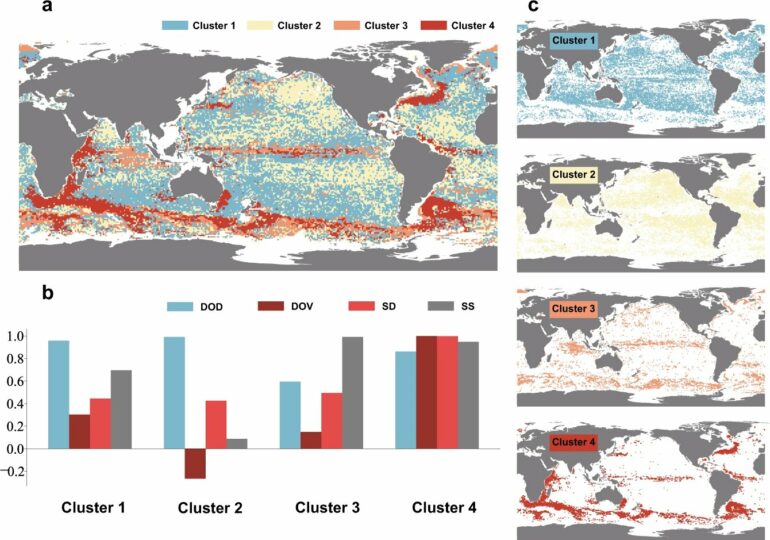Ocean motion plays a key role in the Earth’s energy and climate systems. In recent decades, ocean science has made great strides in providing general estimates of large-scale ocean motion. However, there are still many dynamic mechanisms that are not fully understood or resolved.
Prof. Su Fenzhen’s team at the Institute of Geographic Sciences and Natural Resources Research of the Chinese Academy of Sciences and their collaborators found that humans know less than 5% of the ocean currents at depths of 1,000 meters below the sea surface, with important implications for modeled predictions of climate change and carbon sequestration.
Their findings were published in Nature Communications.
The researchers used a displacement dataset of 842,421 observations produced from Argo floats from 2001 to 2020. Lagrangian velocities were computed near 1,000-meter depth, and several accuracy indicators were used to compare Argo float velocities with simulated values from global circulation models.
Results showed that only 3.8% of the mid-depth oceans can be considered as accurately modeled.
“An important finding that circulation energy in almost all of the world’s oceans is underestimated. This is probably due to the poor resolution of high-frequency dynamics in ocean circulation models and the inadequacy of current solutions to sub-grid processes,” said Prof. Su.
“In the future, we expect to develop ocean circulation models that could more faithfully represent observed ocean currents through more intensive and qualified observations, more productive parameterization, finer model resolution, and in-depth theoretical analysis,” he said.
The study highlights the nature and extent of the mismatch between scientific knowledge and the actual ocean environment. It can help guide recommendations for more intensive observational and more accurate predictions to reduce the large and significant biases between models and observations.
More information:
Fenzhen Su et al, Widespread global disparities between modelled and observed mid-depth ocean currents, Nature Communications (2023). DOI: 10.1038/s41467-023-37841-x
Provided by
Chinese Academy of Sciences
Citation:
Today’s ocean models can only simulate less than 5% of the currents at 1,000-meter depth (2023, May 12)
